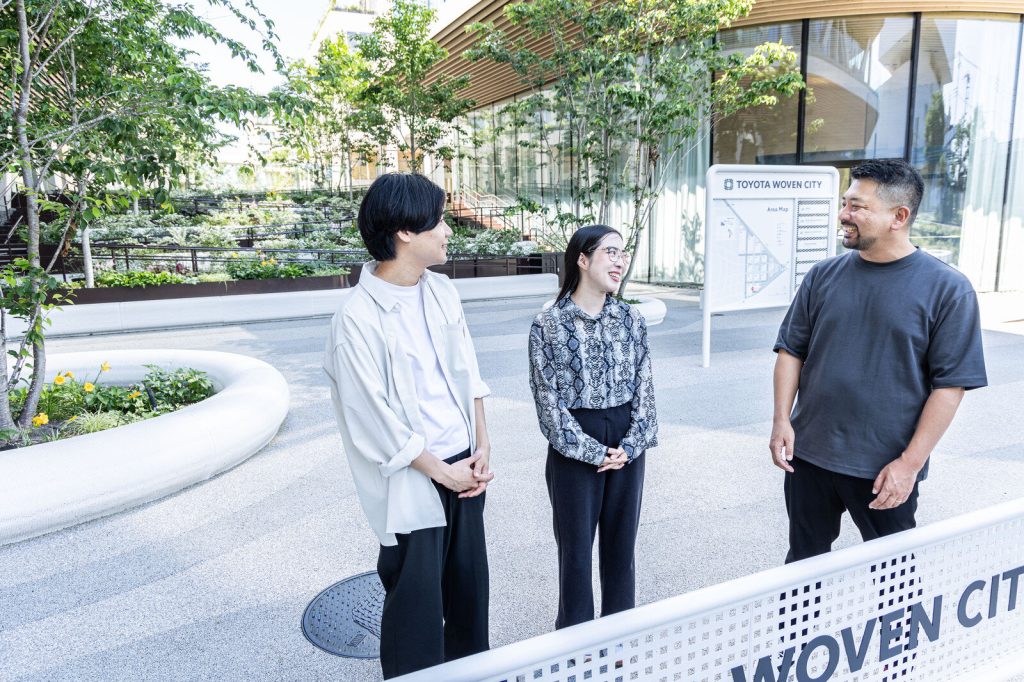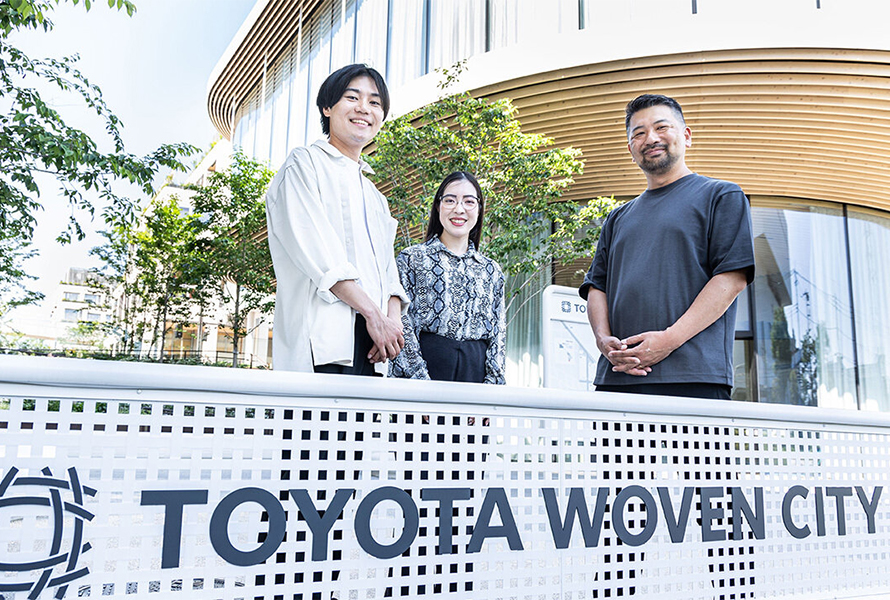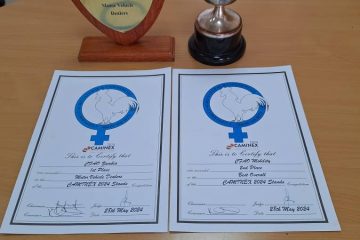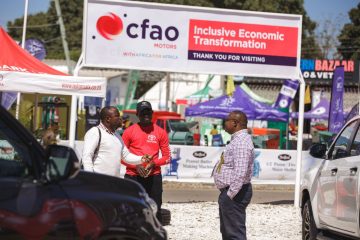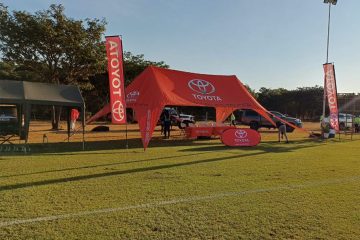Passing through curtains emblazoned with the words “Weaving the Future,” you find a lawn with cushions, and tables with snacks.
Screens show images of Woven City. The people seated on the grass look relaxed, jotting down notes on the provided materials.
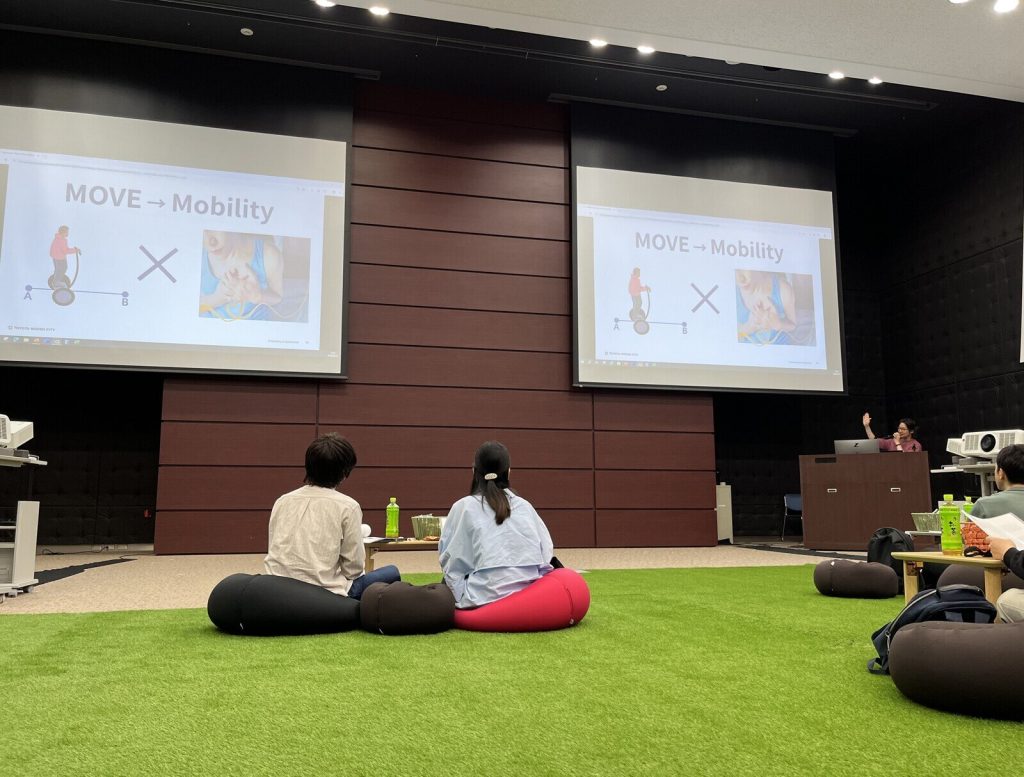
This rather curious scene, somewhere between a conference and a picnic, was actually part of a briefing held in May for prospective residents of Woven City (Susono City, Shizuoka).
Hosted across the road from Woven City at Toyota Motor East Japan’s recently-renamed Fuji Susono Technical Center, the event was organized for Toyota personnel working near the site.
The word “briefing” may conjure up images of a large meeting room with rows of desks—which is exactly how the venue looks on a regular day.
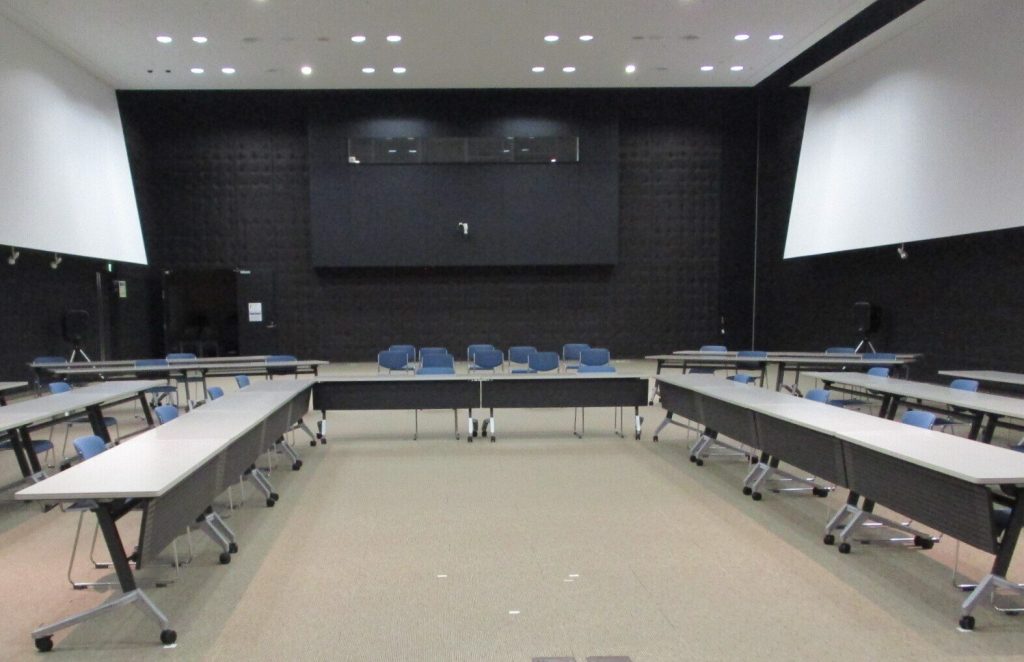
This series has looked at the efforts and vision of those involved in Woven City. For this article, we spoke with Woven by Toyota (WbyT) members hard at work handling various tasks for prospective residents, from applications to moving in or out, which includes these unusual information sessions.
Heart of Woven City
The people who will live in or visit Woven City are known as “Weavers.” When we dropped by in June, preparations were underway to welcome the first resident Weavers at the official launch this fall*.
* Woven City plans to begin accepting Weavers as visitors from the next fiscal year.
Those hoping to move into Woven City need to understand and embrace the purpose and concept of the city as a “living laboratory” that seeks to enhance “well-being for all”. Selection will depend on various factors, including individual preferences as well as the types of rooms WbyT can offer and the trials being conducted.
One of WbyT’s mottos is “Weavers Are the Heart of Woven City.”
Risako Kusu, who has been planning and organizing the Weavers (resident) recruitment website and the recent briefing, explains the mindset behind these words.
Kusu
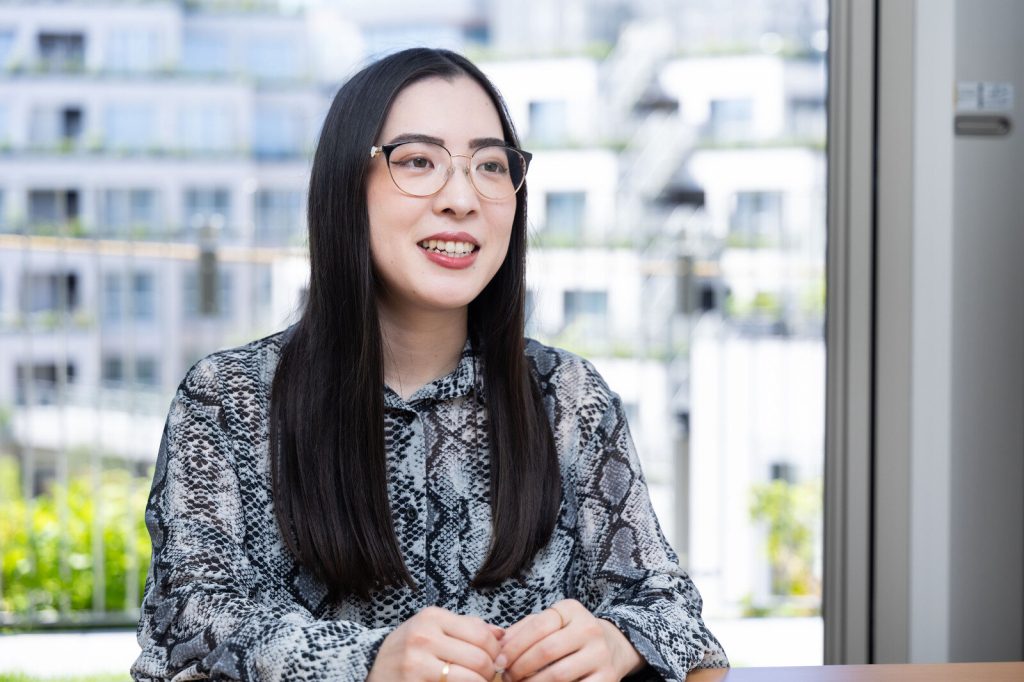
Even if we have Inventors eager to create things, they cannot achieve this without Weavers—the city can’t exist without Weavers, that’s how important they are. That is the idea we have always tried to convey, from the very start of the application process through to the briefing sessions and beyond.
We’ve been consistent with this messaging since we first put out the call for residents.
While all the talk of a “living laboratory” inevitably turns the spotlight on Inventors and their creations, the city’s uniqueness stems from being able to obtain real feedback from everyday life.
That is why Weavers and Inventors are considered equally essential.
The WbyT team is working to share this message with Toyota staff and their families, as well as members of the general public who will one day call the city home.
Idea seeds close at hand
With Weavers being just as important as Inventors, the briefing we described earlier was designed to ensure that potential participants understand Woven City’s core concept, and to help them visualize living in the community and contributing to various demonstration trials.
The most eye-catching feature of these sessions is no doubt the lawn-covered floor. In fact, this idea was borrowed from elsewhere.
“We didn’t want to make it formal, and we wanted to give a sense of the vibe before people had set foot in Woven City.”
This was WbyT’s first such briefing, and although they had decided on the information to be shared, the “how” was a key point.
In particular, the team focused on households. The session was attended by individuals, couples, and families. Those who put up their hands as potential residents may already be familiar with the city or passionate about the project, but how do you ensure that partners and children who will also make the move are not left behind, and equally engaged? Kusu and the other WbyT members discussed various ideas that will help with public recruiting further down the line.
In the process, last fall the team set its sights close to home—their own office in Nihonbashi, Tokyo, which features the following space:
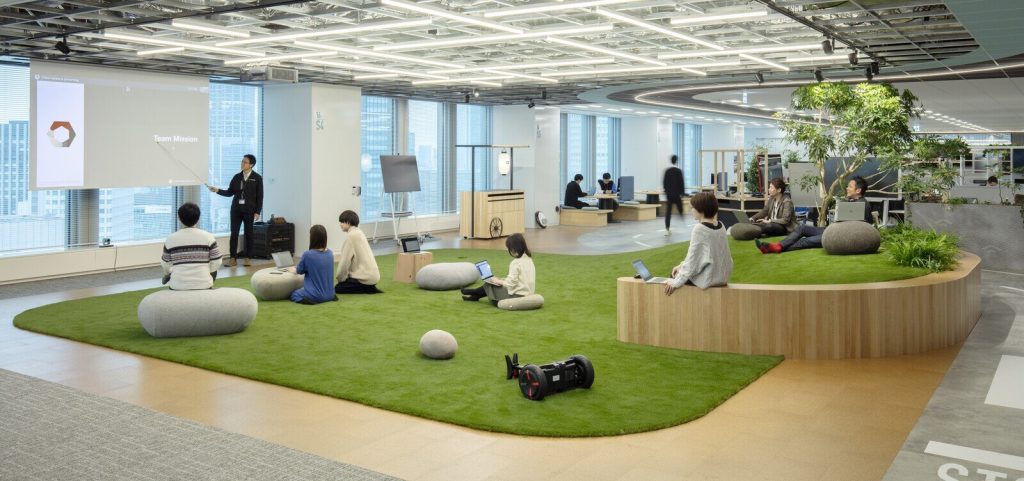
Of course, the office also has conference rooms where important meetings are held. At other times, however, staff can stretch their legs out on the grass for more candid and casual conversations.
“Our workplace is not overly formal, with a culture where you can talk about anything on your mind and work together across department lines to find solutions,” says Kusu. “I am confident that, even after the official launch, Woven City will retain the same friendly atmosphere. We wanted people to feel that at our sessions as well.”
Initially, the team had also thought of setting out tables and chairs, but then decided that sitting on grass would bring attendees closer together and allow them to relax while listening to the presentation. Rough images of the venue were drawn up, and things moved swiftly from there.
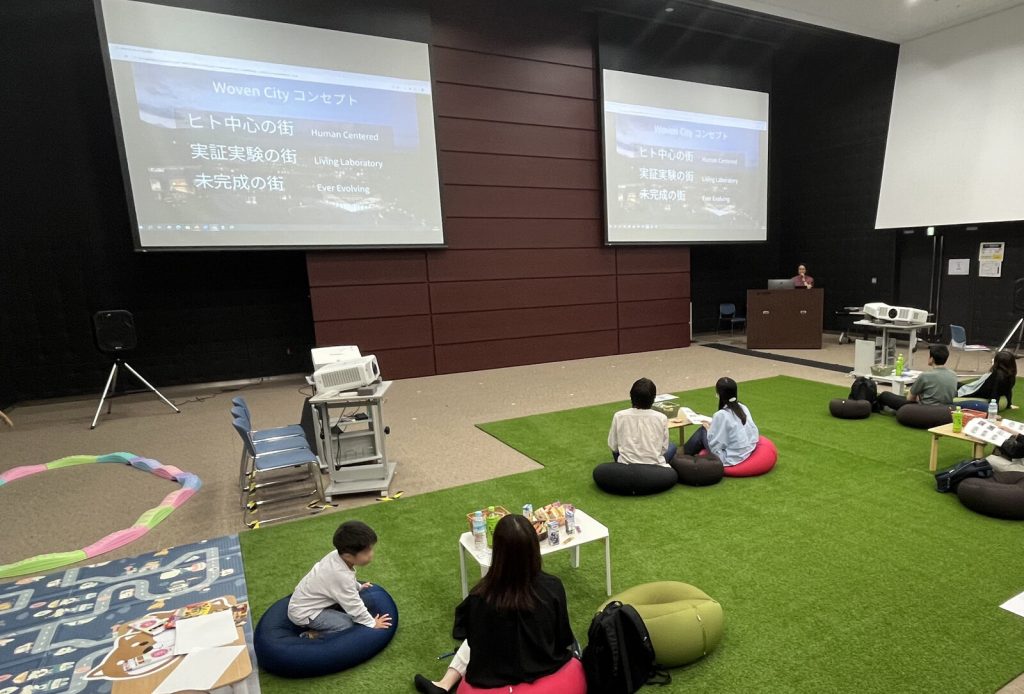
The briefing venue also provided a children’s space (bottom left), which “made it easier to relax and follow the discussion,” according to one participant.
From grass to road
The briefing was actually split across two venues, with an interactive session also running at the same time to offer a taste of Woven City. Let’s take a closer look.
Participants passed through a mock-up of the entry gates that will greet visitors at Woven City’s Welcome Center, as showcased in our previous article. Leaving behind the lawn of the info session, this venue had paths marked out in the form of a road—perfect for a test course for mobility.
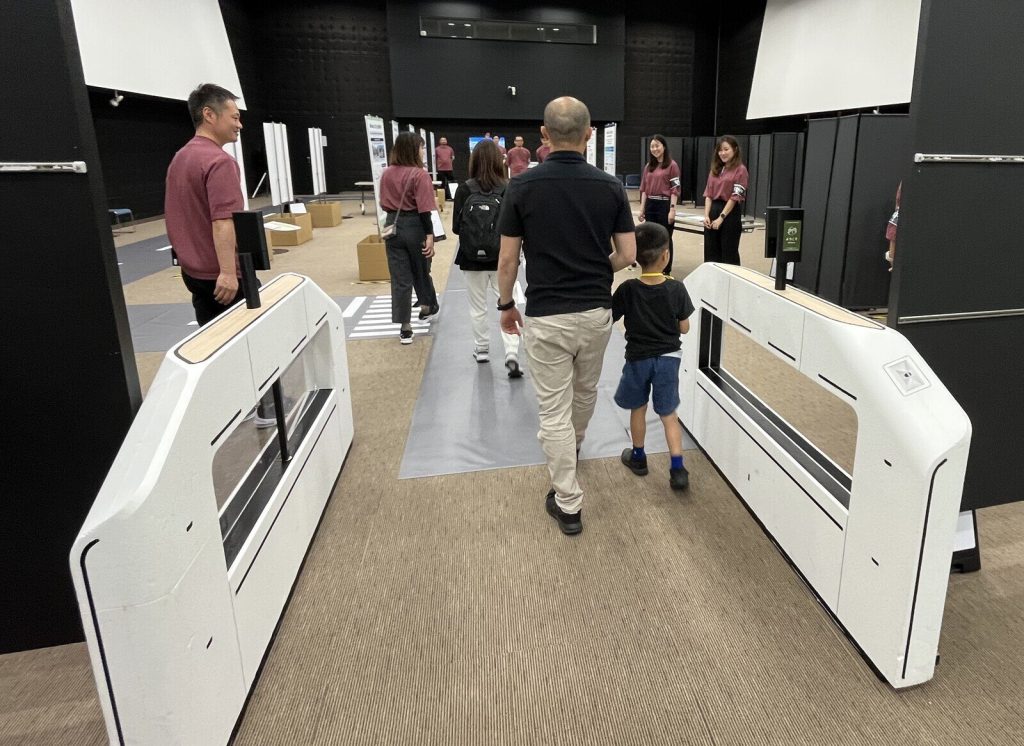
The entrance to the interactive session. Once through the mock-up entry gate, attendees followed a path indicated by mats resembling a road.
Inside the venue, participants found panels illustrating life in Woven City and its surrounding environment, as well as a chance to stroll the streets in virtual reality.
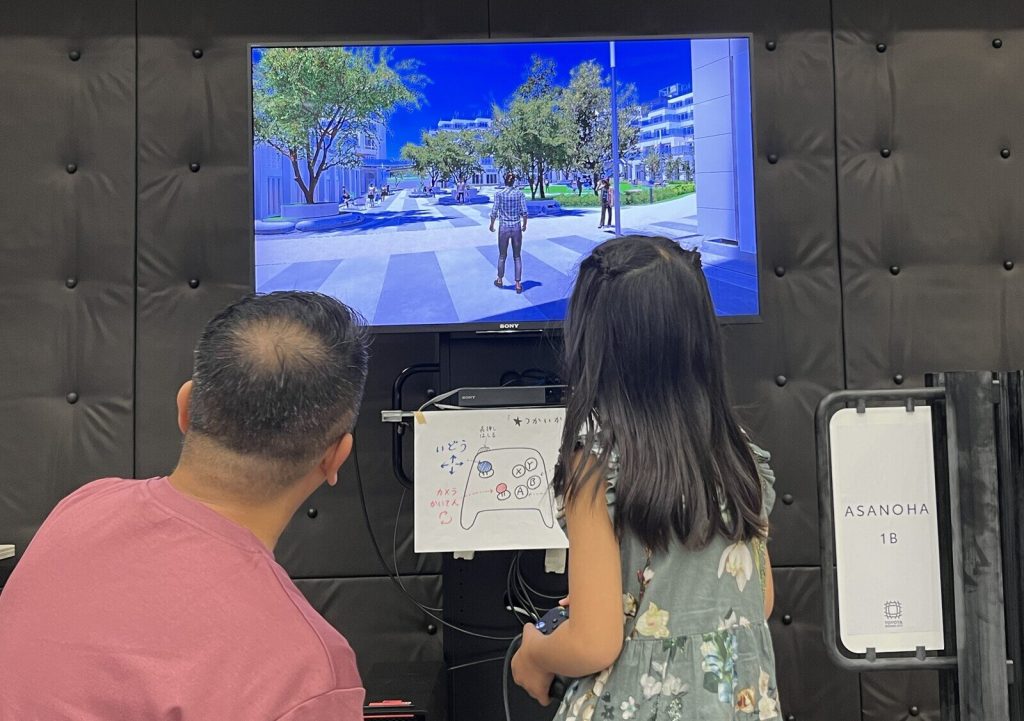
They experienced what it would feel like to encounter one of the transport robots that will move through Woven City’s residential areas, automatically detecting and avoiding people. The walkway where this took place was made a similar width to the shared corridors used by the city’s residents.
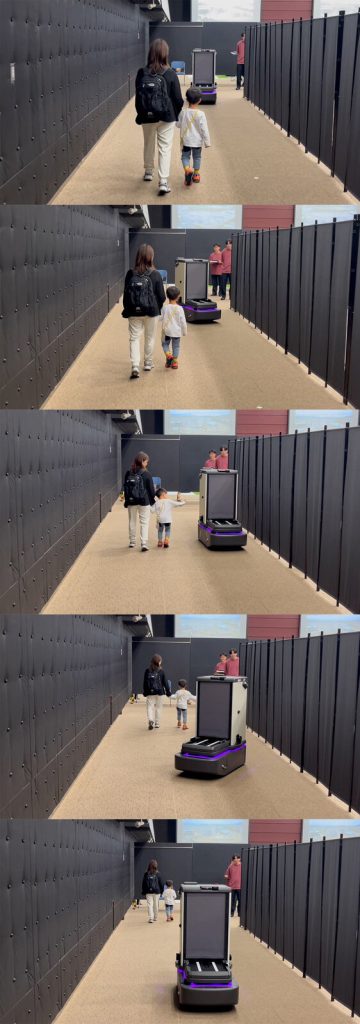
After the robot encounter, staff asked participants about their experience, giving them a sense of how they might take part in trials and provide feedback.
Toyota Times spoke with attendees, who said, “I would feel reassured if we could tell that the robot had noticed us (via some kind of signal).” Another added, “I’m worried whether a child on their own would be safe.” Such input is sure to drive the technology’s further evolution.
Atsushi Narita is part of the team responsible for designing the user experience (UX). He collaborates with Kusu’s team in putting together elements such as the briefing and interactive session. He explained the intent behind the two sides of the event.
Narita
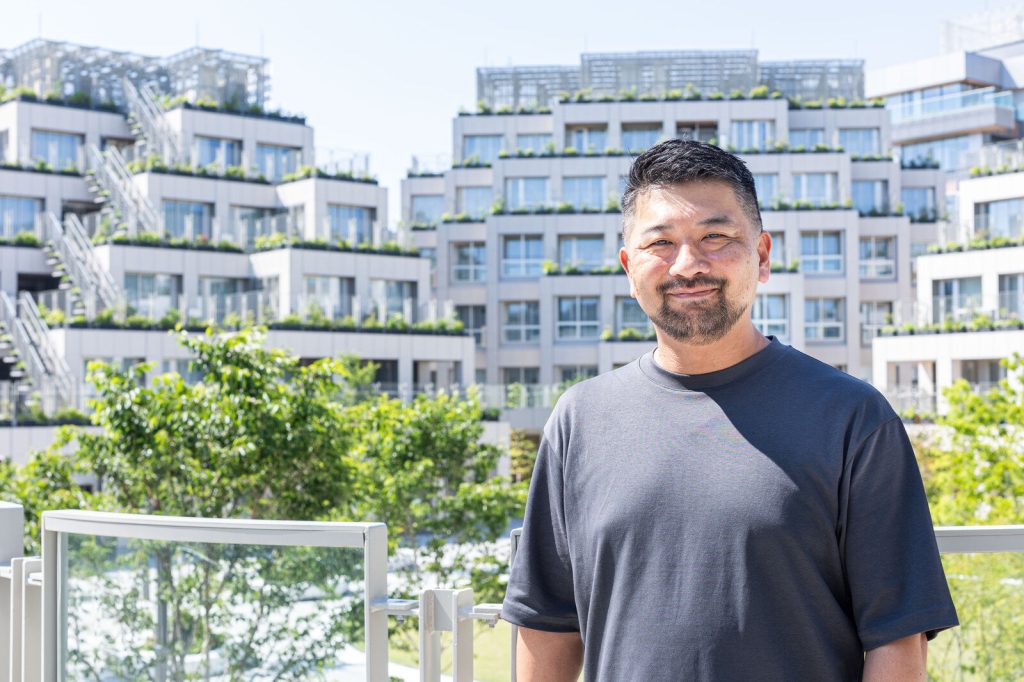
Collectively, we talked about what kind of relationship we, the people working in Woven City, want to create with the Weavers and Inventors. The underlying idea is that, rather than receiving Weavers as guests or customers, we will work together in co-creating the future of mobility in Woven City.
As much as possible, incorporating the feel of our office into the briefing and the atmosphere of the interactive session was about creating a relationship of acceptance as equal peers, rather than us talking down to the participants. I was really glad to see everyone leaving with smiles on their faces.
“Rather than receiving Weavers as guests or customers, we will work together in co-creating the future of mobility in Woven City” ——this sentiment was shared not only by the team designing the briefing and interactive sessions, but also by the members preparing to welcome Woven City’s residents.
Weavers’ buddies
So far, we have seen how the briefing and interactive sessions have been organized for prospective residents. Another team is also working to ensure the Weavers have a smooth first day when they arrive this fall.
Since February, this team has run through multiple rehearsals in Woven City, checking everything including the routes that will take Weavers to their rooms, directions to the parking areas, and access for moving companies.
Things that looked good in the planning stage did not necessarily fare well once the team got on the ground. Some even pointed out that the grim expressions would do little to make Weavers excited.
From May, WbyT also began “real-life tests” in which employees and their families came to live in Woven City for short stays of around a week. To date, nearly 100 people have taken part, helping to identify points of improvement from both the resident and operational perspectives.
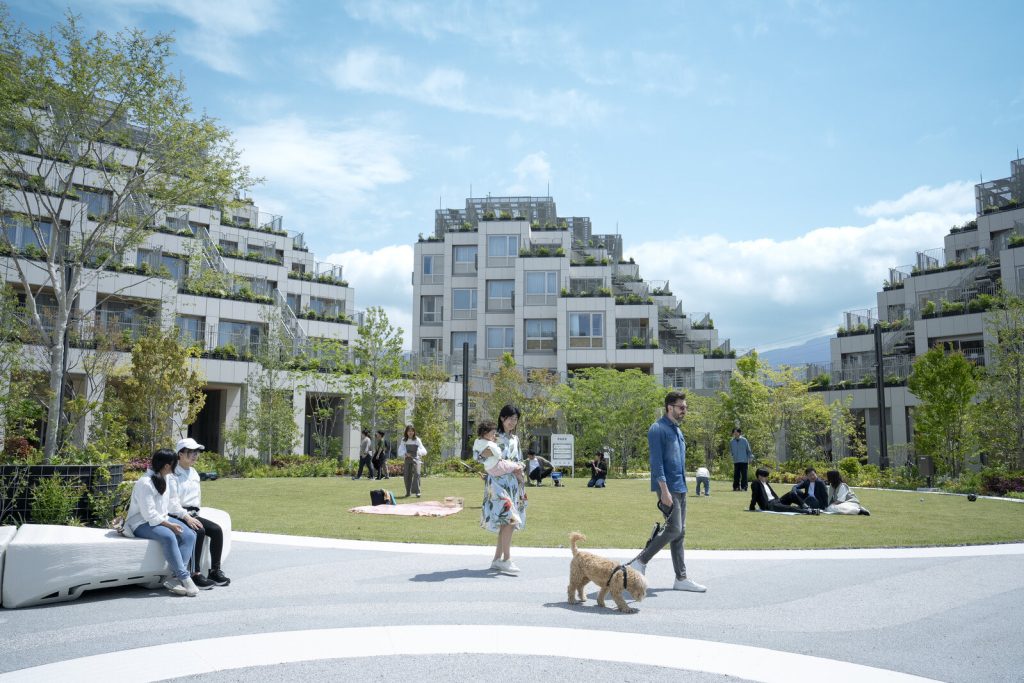
Real-life testing in progress
Shohei Iwata is part of the team preparing to welcome residents. During tests on location, he came to recognize that, rather than offering a mechanical response to each concern, it is important to see things from the other side.
Iwata
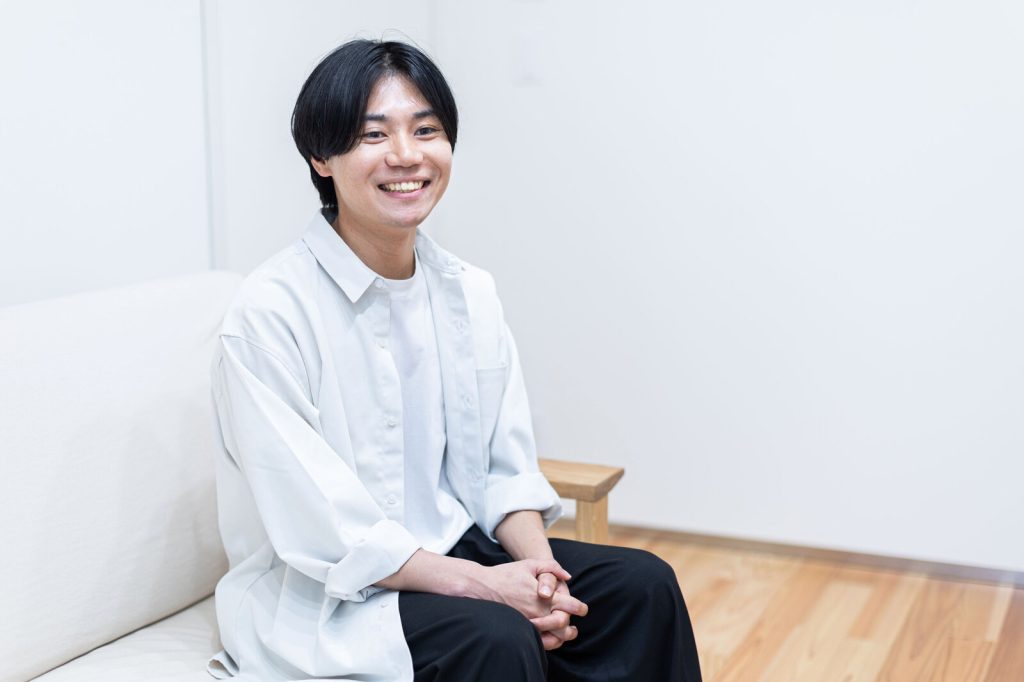
When I made an effort to figure out what lay at the root of their requests, people would tell me, “Yes, that’s it—that’s what I really need.”
I would love to serve as something like a buddy for the residents.
They will be coming here for the first time. Although this is a living laboratory, we’re going to start with something rather unrelated: building a relationship where people can come to us with any problems or worries from their daily lives. If we can resolve their concerns, they will be able to participate more in the demonstration trials, where they can experience first-hand the value of Woven City as an urban test course.
The real-life tests showed me that, if you engage with people earnestly, you can build a relationship that encourages them to open up and share their true feelings.
Once the Weavers have settled into their new life, Iwata and Narita’s teams have also been tasked with planning and operating the Woven City Weavers’ Center.
Woven City’s “community center”
“How do we get involved in the demonstration trials?” “What can I do to contribute?”
The Weavers’ Center is a facility set up to answer such questions from residents, and to offer support and peace of mind for life in Woven City.
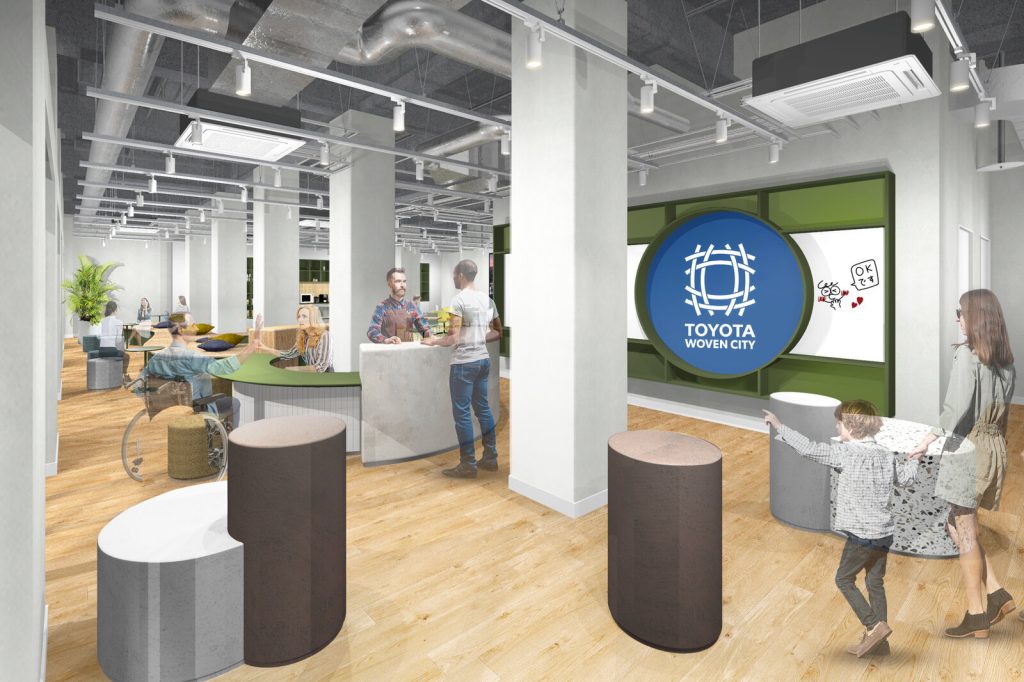
Concept images for the Weavers’ Center currently being planned
In addition to assisting those in need, it will also serve as something like a community center, where people can casually mingle—a place where Weavers can take a break and have a chat, or children can come to do their homework.
As Kusu explained, Weavers are a vital and indispensable presence in Woven City. The center will hopefully provide the support they need, encouraging Weavers to take the first step and participate in the city’s demonstration trials.
The plan is to equip the Weavers’ Center with a support desk for inquiries and consultations, along with information and bulletin boards to encourage interaction between residents.
Earlier in the article, we noted that Kusu, Narita, Iwata and their teams were hard at work handling everything from applications to helping residents move in or out, but they are also exploring the idea of maintaining alumni connections to the city after people depart.
Before long, residents will finally arrive and bring Woven City to life. When we asked Narita what he wants the city to become, he responded with a smile.
Narita
More than anything, I think it would be wonderful if Weavers and Inventors alike saw Woven City as their own place and proactively sought to make it an even better place to live.
If we can create an atmosphere where Weavers and Inventors are driven to continue producing new forms of mobility, I think that would be the ultimate co-creation relationship.
I hope Woven City becomes a place they consider their own.
